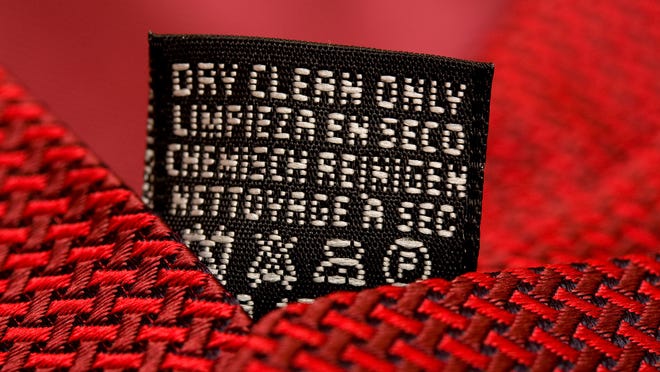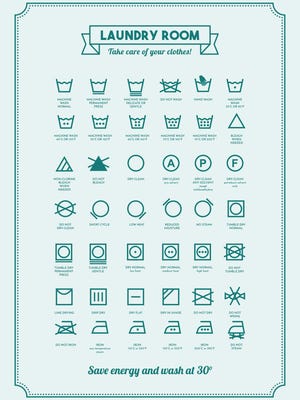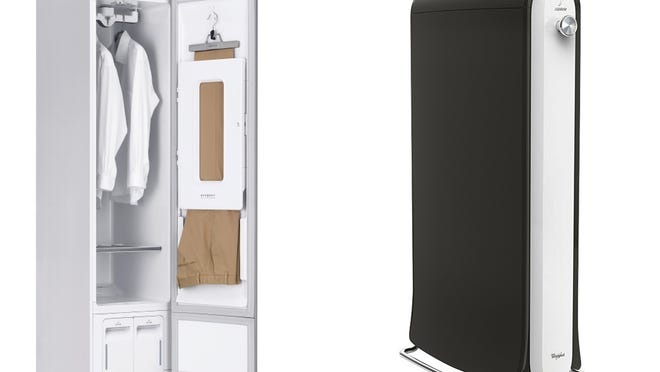How To Dry Clean Your Own Clothes At Home

— Our editors review and recommend products to help you buy the stuff you need. If you make a purchase by clicking one of our links, we may earn a small share of the revenue. Our picks and opinions are independent from any business incentives.
Regret is buying the perfect article of clothing only to discover a tiny "Dry-Clean-Only" tag tucked away at the seam. This is an all too common—and frustrating—experience for me. One time I actually tossed a blazer into the washing machine, thinking a warm-water Delicates cycle would be gentle enough. The result? A shrunken, misshapen lesson on the importance of washing clothes correctly.
Obviously, it was my own carelessness that led to the blazer's demise. But, believe it or not, most garments with a dry-clean-only tag can actually be washed at home—you just need the right technique. According to Richard Neale, director of the laundry and dry-cleaning consultant LTC & DTC, dry-clean labels are often just slapped onto garments as a precaution.
"Dry-clean-only labels are often put on as a 'cover all' by manufacturers," he told the Daily Mail. "Whether they are needed is often guesswork."
Sure, there's significant risk with washing dry-clean-only garments yourself, so we'd recommend following the manufacturer's cleaning instructions for anything particularly beloved. In most cases, though, it's perfectly safe. Just make sure you follow our tips for how to take the guesswork out of washing these delicate fabrics at home.
Step 1: Read the Label
So you have a garment with a dry-clean-only label, but what else does it say? Those little symbols are important. Pay careful attention to the type of fabric that your garment is made of, because that will help you determine how you should proceed.
Pretty much every delicate fabric can be damaged by your home washing efforts. That includes suede, leather, velvet, taffeta, rayon, and anything with fur or down. Suits, pleated skirts, and anything with significant or oil-based stains are also too tricky to tackle alone. These are all best left to dry cleaning professionals.
So what does that leave? Wool, silk, cotton, linen, and durable polyester fabrics are all fair game for home washing. Check out our fabric guide for a detailed list of cleaning procedures.

Step 2: Do a Spot Test
If you're anxious about the fate of your garment, a spot test will give you some peace of mind. Drip a small amount of water (and perhaps the detergent you plan to use) onto a small, unseen portion of your garment, then rub a cotton swab across the area. If the fabric's dye stains the cotton swab, it needs to be dry-cleaned.
You can perform the same test over lace and elaborate stitchings—just make sure the dye doesn't bleed there either. If you come away with pristine cotton swabs, and the clothing item doesn't appear damaged once you've wet it, it's safe to start washing.
_-in_round_container.jpg?width=660&height=372&fit=crop&format=pjpg&auto=webp)
Step 3: Get Washing
Ready for clean clothes? Pick your washing technique carefully. Cotton, linen, and durable polyesters are often safe to wash with a machine, but wool, silk, and some delicate types of cotton are best treated by hand.
Delicates Laundry Bags, Set of 4 - Buy now for $12.97
To machine wash, turn your garments inside out and slip them into a mesh bag designed to hold delicates during a wash. Machine wash cold with a mild detergent, using the gentlest cycle available. Snatch your garments from the machine as soon as the cycle ends, and lay them out flat to dry.
To hand wash, use a clean sink or basin. Fill the tub with cold water and add a small amount of a mild detergent, like Woolite. Mix until the water appears sudsy. Dip your clothing in and out of the mixture until it's saturated, then gently agitate it in the water, rubbing any soiled areas softly with your fingers. When you feel confident that the garment is clean, empty the sink or basin and fill it with cold water, this time without soap. Dip the item in and out of the water until it's no longer soapy.
To dry, lay the garment on a towel. Roll up the towel with the clothing inside, squeezing gently to remove water. Unroll the towel and move the garment to a drier area of the towel. Repeat this process until the fabric is no longer dripping, which will probably be 3 to 5 times. Then, lay it out flat to dry.
At-home dry cleaning kits are another possibility, but Martha Stewart Living points out that they can't handle all stains equally. If you're convinced this is the way to go, these kits can be purchased for $20 or less.

Never use the dryer!
Dry-clean-only clothing should be treated as gently as possible, which means you should be careful not to stretch or wring your garments during the washing and drying process. Keep wools away from warm or sunny areas, as they're especially prone to shrinking.
Also important: Avoid the dryer like you would the plague! That dreaded machine will only transform your dry-clean-only garments into tiny, saggy shadows of their former selves.
With that in mind, go forth and wash your delicate fabrics in the comfort of your own home. Just be smart about it. May you never lose the perfect blazer to an ill-fated wash cycle again!
Home dry cleaning machines
Sure, there are a handful of inexpensive kits that work with your washing machine, but if you need something more robust consider a dedicated product like the LG Styler or the Whirlpool Swash. They're not home dry cleaning machines as much as clothes refreshers, because neither attempts to remove stains. They fill niche gaps for those that want to "freshen up" their non-washing-machine-friendly clothes without hauling everything to the dry cleaner. Neither gets a solid recommendation from us, but to the right person they could be just the thing.
The LG Styler (as low as $1599 at JC Penney) is the more significant investment. It's a hard-shell cabinet that uses steam and gentle shaking to smooth wrinkles and eliminate smells. Our Styler review concluded that it works pretty well but only makes sense for a small cross-section of consumers.
The Swash ($359 at Best Buy) is the cheaper option, but isn't quite as effective. It's unclear whether Swash will leave to see another upgrade cycle.

How To Dry Clean Your Own Clothes At Home
Source: https://www.usatoday.com/story/tech/reviewedcom/2017/02/22/how-to-wash-drycleanonly-clothes-at-home/97950680/
Posted by: wrightdeshe1946.blogspot.com

0 Response to "How To Dry Clean Your Own Clothes At Home"
Post a Comment